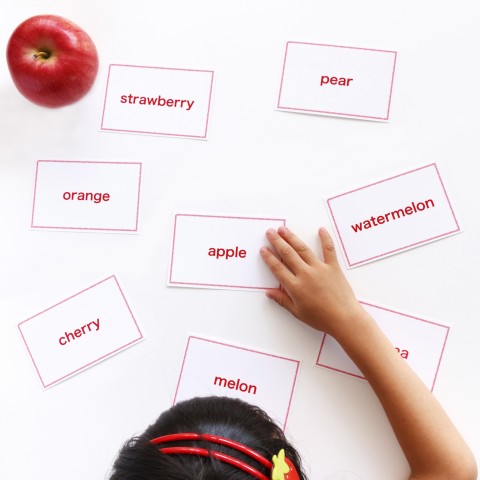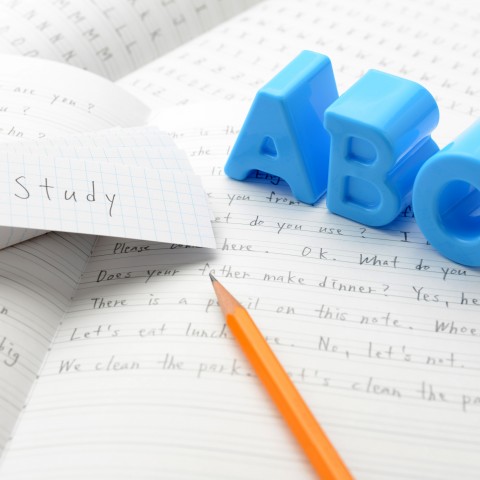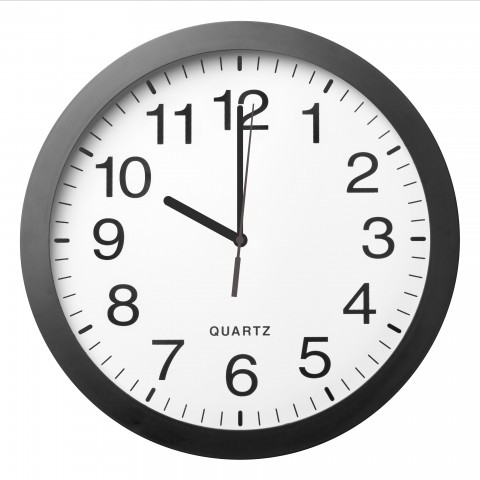
Pronouns can help you better articulate and express your ideas by allowing you to avoid repeating the same nouns over and over again. There are various pronouns in English, such as personal pronouns like “he,” “she,” “it,” “our,” and “theirs”; demonstrative pronouns like “this” and “that”; and indefinite pronouns like “somebody” and “nowhere.”
These pronouns are very useful when it comes to facilitating communication—think how clumsy it would sound to say “Peter really likes Peter’s own voice and Peter’s own appearance,” and “Sharon and Sharon’s sister are looking for Sharon’s mother!”
Have you ever wondered what Cantonese pronouns there are? Are you curious to learn how you can use them to communicate your thoughts more effectively? We’ve prepared a list of Cantonese pronouns and respective examples for you. Read on to find out more!
 Table of Contents
Table of Contents
- Cantonese Personal Pronouns
- Demonstrative Pronouns
- Interrogative Pronouns
- Indefinite Pronouns
- Conclusion: How CantoneseClass101.com Can Help You Learn More Cantonese
1. Cantonese Personal Pronouns

We’ve divided the pronouns into singular (e.g. “I,” “you,” “he,” “she”) and plural (e.g. “we,” “they”) for your easy reference. Note that there isn’t an honorific version of pronouns in Cantonese, and both the words and example phrases below are in spoken form:
1- Singular

1- 你
Meaning: you
Romanization: nei5
Example –
- Sentence / Phrase: 你鐘意咖啡。
- Romanization: nei5 zung1 ji3 gaa3 fe1
- Meaning: You like coffee.
2- 我
Meaning: I
Romanization: ngo5
Example –
- Sentence / Phrase: 我想改變世界。
- Romanization: ngo5 soeng2 goi2 bin3 sai3 gaai3
- Meaning: I want to change the world.
3- 佢
Meaning: she / he / it
Romanization: keoi5
Note: There are no differences between “he,” “she,” or “it” in Cantonese. You can use 佢 for all circumstances.
Example –
- Sentence / Phrase: 佢好得意。
- Romanization: keoi5 hou2 dak1 ji3
- Meaning: She / He / It is cute.
4- 你嘅
Meaning: your / yours
Romanization: nei5 ge3
Example 1 –
- Sentence / Phrase: 我好想睇穿你嘅心。
- Romanization: ngo5 hou2 soeng2 tai2 cyun1 nei5 ge3 sam1
- Meaning: I want to see right through your heart.
Example 2 –
- Sentence / Phrase: 係你嘅。
- Romanization: hai6 nei5 ge3
- Meaning: It’s yours.
5- 我嘅
Meaning: my / mine
Romanization: ngo5 ge3
Example 1 –
- Sentence / Phrase: 我嘅天堂
- Romanization: ngo5 ge3 tin1 tong4
- Meaning: My paradise
Example 2 –
- Sentence / Phrase: 你係我嘅。
- Romanization: nei5 hai6 ngo5 ge3
- Meaning: You are mine.
6- 佢嘅
Meaning: her / his / its / hers
Romanization: keoi5 ge3
Example 1 –
- Sentence / Phrase: 佢嘅答覆
- Romanization: keoi5 ge3 daap3 fuk1
- Meaning: His / her reply
Example 2 –
- Sentence / Phrase: 唔係佢嘅。
- Romanization: m4 hai6 keoi5 ge3
- Meaning: It’s not his / hers.
2- Plural
7- 你哋
Meaning: you guys
Romanization: nei5 dei6
Example –
- Sentence / Phrase: 你哋無做錯到。
- Romanization: nei5 dei6 mou4 zou6 co3 dou3
- Meaning: You guys didn’t do anything wrong.
8- 我哋
Meaning: we / us
Romanization: ngo5 dei6
Example 1 –
- Sentence / Phrase: 我哋係香港人。
- Romanization: ngo5 dei6 hai6 hoeng1 gong2 jan4
- Meaning: We are Hong Kongers.
Example 2 –
- Sentence / Phrase: 佢同我哋講佢係警察。
- Romanization: keoi5 tung4 ngo5 dei6 gong2 keoi5 hai6 ging2 caat3
- Meaning: He told us he is a cop.
9- 佢哋
Meaning: they / them
Romanization: keoi5 dei6
Example 1 –
- Sentence / Phrase: 佢哋係醫生。
- Romanization: keoi5 dei6 hai6 ji1 sang1
- Meaning: They are doctors.
Example 2 –
- Sentence / Phrase: 你其實都好關心佢哋。
- Romanization: nei5 kei4 sat6 dou1 hou2 gwaan1 sam1 keoi5 dei6
- Meaning: Actually, you care about them.
10- 你哋嘅
Meaning: your / yours (plural)
Romanization: nei5 dei6 ge3
Example 1 –
- Sentence / Phrase: 發揮你哋嘅創意。
- Romanization: faat3 fai1 nei5 dei6 ge3 cong3 ji3
- Meaning: Let your imagination go wild.
Example 2 –
- Sentence / Phrase: 呢啲係你哋嘅。
- Romanization: ni1 di1 hai6 nei5 dei6 ge3
- Meaning: These are yours.
11- 我哋嘅
Meaning: our / ours
Romanization: ngo5 dei6 ge3
Example 1 –
- Sentence / Phrase: 我哋嘅字典
- Romanization: ngo5 dei6 ge3 zi6 din2
- Meaning: Our dictionary
Example 2 –
- Sentence / Phrase: 字典係我哋嘅。
- Romanization: zi6 din2 hai6 ngo5 dei6 ge3
- Meaning: The dictionary is ours.
12- 佢哋嘅
Meaning: their / theirs
Romanization: keoi5 dei6 ge3
Example 1 –
- Sentence / Phrase: 佢哋嘅文化
- Romanization: keoi5 dei6 ge3 man4 faa3
- Meaning: Their culture
Example 2 –
- Sentence / Phrase: 可能係佢哋嘅。
- Romanization: ho2 nang4 hai6 keoi5 dei6 ge3
- Meaning: Maybe it’s theirs.
2. Demonstrative Pronouns

1- 呢個
Meaning: this
Romanization: ni1 go3
Example –
- Sentence / Phrase: 呢個係我嘅電話。
- Romanization: ni1 go3 hai6 ngo5 ge3 din6 waa2
- Meaning: This is my cell.
2- 嗰個
Meaning: that
Romanization: go2 go3
Example –
- Sentence / Phrase: 嗰個人
- Romanization: go2 go3 jan4
- Meaning: That person
3- 呢啲
Meaning: these
Romanization: ni1 di1
Example –
- Sentence / Phrase: 呢啲珍珠好韌㗎。
- Romanization: ni1 di1 zan1 zyu1 hou2 jan6 gaa3
- Meaning: These bubbles are very chewy.
4- 嗰啲
Meaning: those
Romanization: go2 di1
Example –
- Sentence / Phrase: 嗰啲蟬嘅聲音, 我覺得好好聽㗎。
- Romanization: go2 di1 sim4 ge3 sing1 jam1, ngo5 gok3 dak1 hou2 hou2 teng1 gaa3
- Meaning: I love the sound of those cicadas.
5- 呢度
Meaning: here
Romanization: ni1 dou6
Example –
- Sentence / Phrase: 呢度係香港。
- Romanization: ni1 dou6 hai6 hoeng1 gong2
- Meaning: Hong Kong is here.
6- 嗰度
Meaning: there
Romanization: go2 dou6
Example –
- Sentence / Phrase: 嗰度好靚。
- Romanization: go2 dou6 hou2 leng3
- Meaning: It’s beautiful there.
3. Interrogative Pronouns

1- 乜嘢
Meaning: what
Romanization: mat1 je5
Example –
- Sentence / Phrase: 乜嘢係通貨膨脹呀?
- Romanization: mat1 je5 hai6 tung1 fo3 paang4 zoeng3 aa3
- Meaning: What is inflation?
2- 邊個
Meaning: who
Romanization: bin1 go3
Example –
- Sentence / Phrase: 邊個超級英雄係最強㗎呢?
- Romanization: bin1 go3 ciu1 kap1 jing1 hung4 hai6 zeoi3 koeng4 gaa3 ne1
- Meaning: Who is the strongest superhero?
3- 邊個嘅
Meaning: whose
Romanization: bin1 go3 ge3
Example –
- Sentence / Phrase: 部電話係邊個嘅?
- Romanization: bou6 din6 waa6 hai6 bin1 go3 ge3
- Meaning: Whose phone is it?
4- 幾時
Meaning: when
Romanization: gei2 si4
Example –
- Sentence / Phrase: 幾時得閒呀?
- Romanization: gei2 si4 dak1 haan4 aa3
- Meaning: When are you free?
5- 邊度
Meaning: where
Romanization: bin1 dou6
Example –
- Sentence / Phrase: 邊度有廁所呀?
- Romanization: bin1 dou6 jau5 ci3 so2 aa3
- Meaning: Where is the toilet?
6- 點樣
Meaning: how
Romanization: dim2 joeng2
Example –
- Sentence / Phrase: 應該點樣準備呢?
- Romanization: jing1 goi1 dim2 joeng2 zeon2 bei6 ne1
- Meaning: How should I prepare?
7- 點解
Meaning: why
Romanization: dim2 gaai2
Example –
- Sentence / Phrase: 點解想做呢份工?
- Romanization: dim2 gaai2 soeng2 zou6 ni1 fan6 gung1
- Meaning: Why do you want this job?
4. Indefinite Pronouns

As opposed to English, there isn’t a set of pronouns in Cantonese with the fixed prefixes of “every-,” “any-,” or “some-.” As such, we’ve instead included the Cantonese equivalents of common indefinite pronouns below:
1- 所有嘢
Meaning: everything
Romanization: so2 jau5 je5
Example –
- Sentence / Phrase: 所有嘢都會同老婆交代。
- Romanization: so2 jau5 je5 dou1 wui3 tung4 lou5 po4 gaau1 doi6
- Meaning: I will tell my wife everything.
2- 所有人
Meaning: everybody
Romanization: so2 jau5 jan4
Example –
- Sentence / Phrase: 所有人都鐘意你。
- Romanization: so2 jau5 jan4 dou1 zung1 ji3 nei5
- Meaning: Everybody likes you.
3- 邊度
Meaning: everywhere
Romanization: bin1 dou6
Example –
- Sentence / Phrase: 邊度都見到你。
- Romanization: bin1 dou6 dou1 gin3 dou2 nei5
- Meaning: You’re everywhere.
4- 一啲嘢
Meaning: something
Romanization: jat1 di1 je5
Example –
- Sentence / Phrase: 如果二零一九年要捨棄一啲嘢,我最想捨棄一啲壞習慣。
- Romanization: jyu4 gwo2 ji6 ling4 jat1 gau2 nin4 jiu3 se2 hei3 jat1 di1 je5, ngo5 zeoi3 soeng2 se2 hei3 jat1 di1 waai6 zaap6 gwaan3
- Meaning: If I must let go of something in 2019, I want to let go of my bad habits.
5- 一啲人
Meaning: somebody
Romanization: jat1 di1 jan4
Example –
- Sentence / Phrase: 係一啲人嘅問題。
- Romanization: hai6 jat1 di1 jan4 ge3 man6 tai4
- Meaning: That’s somebody’s problem.
6- 某啲地方
Meaning: somewhere
Romanization: mau5 di1 dei6 fong1
Example –
- Sentence / Phrase: 某啲地方一定有所犧牲。
- Romanization: mau5 di1 dei6 fong1 jat1 ding6 jau5 so2 hei1 sang1
- Meaning: There will be sacrifices somewhere.
7- 冇嘢
Meaning: nothing
Romanization: mou5 je5
Example –
- Sentence / Phrase: 我冇嘢講。
- Romanization: ngo5 mou5 je5 gong2
- Meaning: I have nothing to say.
8- 冇人
Meaning: no one
Romanization: mou5 jan4
Example –
- Sentence / Phrase: 冇人係完美。
- Romanization: mou5 jan4 hai6 jyun4 mei5
- Meaning: No one is perfect.
9- 冇地方
Meaning: nowhere
Romanization: mou5 dei6 fong1
Example –
- Sentence / Phrase: 冇地方住
- Romanization: mou5 dei6 fong1 zyu6
- Meaning: I got nowhere to live.
10- 乜嘢
Meaning: anything
Romanization: mat1 je5
Example –
- Sentence / Phrase: 乜嘢都有可能。
- Romanization: mat1 je5 dou1 jau5 ho2 nang4
- Meaning: Anything is possible.
11- 乜人
Meaning: anyone
Romanization: mat1 jan4
Example –
- Sentence / Phrase: 乜人都可以申請。
- Romanization: mat1 jan4 dou1 ho2 ji5 san1 cing2
- Meaning: Anyone can apply.
12- 乜嘢地方
Meaning: anywhere
Romanization: mat1 je5 dei6 fong1
Example –
- Sentence / Phrase: 我乜嘢地方都可以瞓得着。
- Romanization: ngo5 mat1 je5 dei6 fong1 dou1 ho2 ji5 fan3 dak1 zoek6
- Meaning: I can fall asleep anywhere.
5. Conclusion: How CantoneseClass101.com Can Help You Learn More Cantonese

Cantonese pronouns are extremely useful in our daily conversations, and we hope by now you’ve memorized some Cantonese pronouns and are ready to use them. Do check out our articles on Cantonese nouns and Cantonese adjectives as well, and be sure to let us know in the comments if you have any questions!
Want to level up your Cantonese after mastering Cantonese pronouns? With CantoneseClass101.com, you can have your daily dose of Cantonese whenever and wherever you want, through mobile apps, desktop software, and our website. We offer entertaining, engaging, and effective lessons on various aspects of the Cantonese language and culture.
Until now, we’ve delivered more than 750,000,000 lessons to thousands of happy students from all around the globe. You can learn Cantonese with over 1060 audio and video lessons delivered by our knowledgeable and energetic hosts, detailed PDF lesson notes, an abundance of vocabulary learning tools, spaced repetition flashcards, and a lively community to discuss the lessons with fellow learners. What are you waiting for? Download our lessons, enjoy our audio and video files, and start learning now!
And keep in mind that if you prefer a one-on-one learning approach and want to further accelerate your Cantonese learning, you can take advantage of our MyTeacher program!
Know that your hard work will pay off, and before you know it, you’ll be speaking Cantonese like a native!


























 Table of Contents
Table of Contents





 Table of Contents
Table of Contents

















































